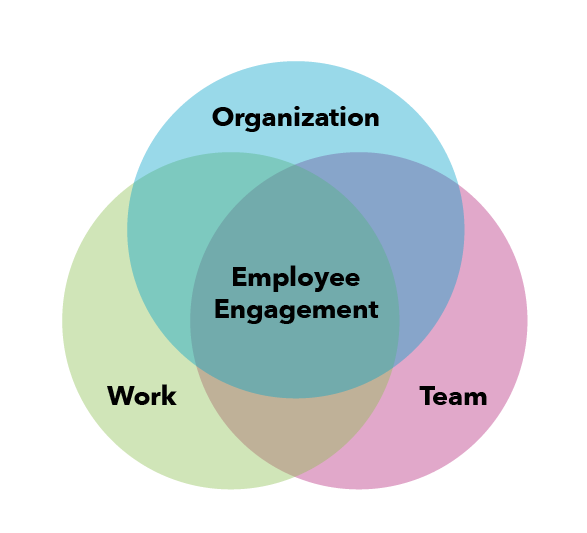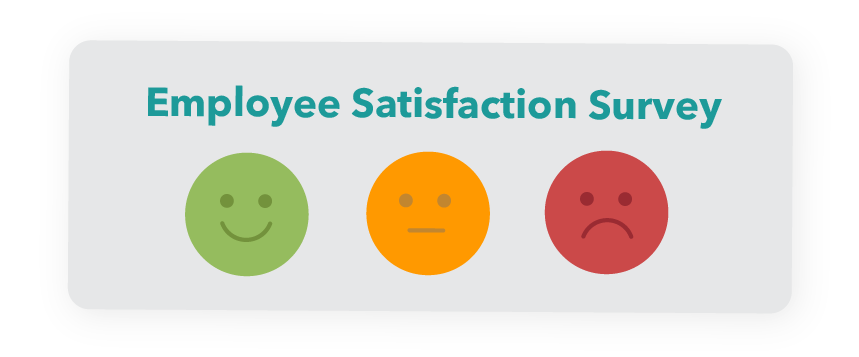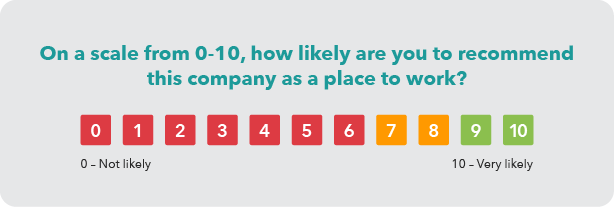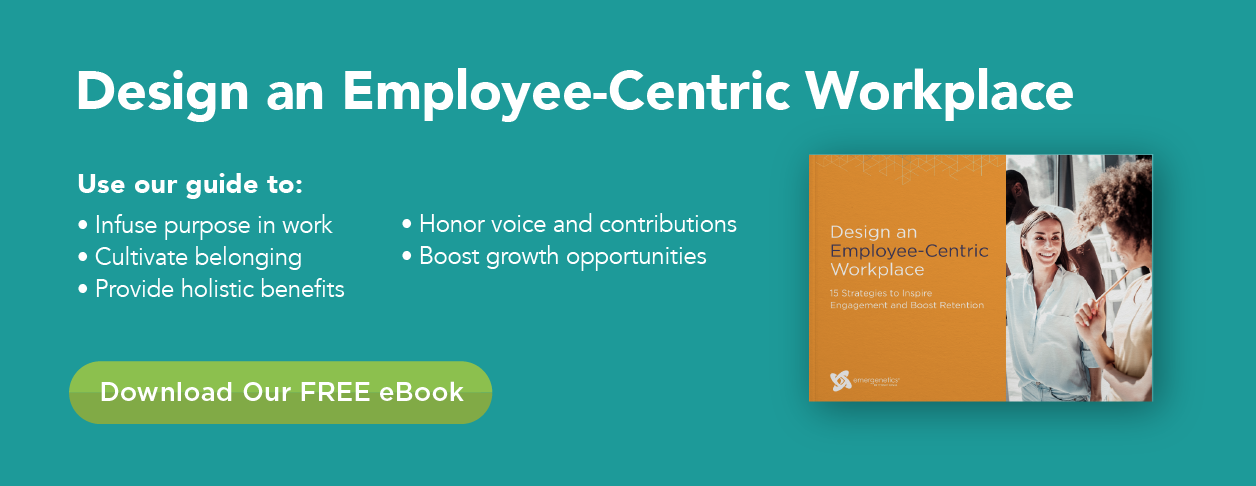Create a Great Employee Experience
People are any organization’s greatest asset. To ensure your employees remain assets, and not become liabilities, leaders need to believe this adage to be absolutely true.
Today there is a far greater need for organizations to take action to support the well-being of their employee populations than ever before. The events of the recent past and current macroeconomic conditions are creating an environment that can be perceived as unsteady or uncertain.

To advance a company through these headwinds, employers must focus on employee engagement to ensure their best performers don’t seek out other opportunities or leave the company. This strategy will not only serve current staff. It will also help to attract and recruit top talent.
There are direct connections between an employee engagement strategy and organizational performance, so investing time and human resources into programming will support healthy company culture, employee performance and business results.
What is Employee Engagement?
According to Qualtrics, a leader in experience management, employee engagement is defined as “how much an employee is committed to helping their organization achieve its goals. It’s demonstrated by how employees think, feel, and act, as well as the emotional connection employees, feel towards their organization, their work and their team.”
The Society for Human Resource Management, SHRM, connects it directly to business results citing: “Employee engagement has emerged as a critical driver of business success in today's competitive marketplace. High levels of engagement promote retention of talent, foster customer loyalty and improve organizational performance and stakeholder value.”

It’s imperative that employers proactively identify the employee engagement strategies that can advance the employee value proposition for their workforce. Whether you need to improve the current state or start from scratch, designing the top employee engagement strategies for the organization will deliver value.
Why Employee Engagement is Essential in the Workplace
Creating meaningful connections to their work, their team and the larger organization is necessary for an employee to find success at work. Whether a staff member is a new employee, entry-level, division vice president or in the C-Suite, the entire team benefits from an organization’s efforts to boost workforce engagement.

Engaged employees are invested in helping their employer achieve its goals, actively decide to contribute as well as remain committed to the organization. They are productive members of the team who also have an emotional connection to their work.
There are direct links between productivity and employee engagement. Gallup’s study shows that highly engaged teams are 21% more productive than those that are disengaged.

In their research, Advanced Workplace Associates (AWA) in partnership with the Centre for Evidence-Based Management (CEBMa) identified six factors that have the greatest impact on knowledge worker productivity:
- Social cohesion
- Perceived supervisory support
- Information sharing
- Common vision, goals and purpose
- External communication
- Trust
If an organization’s culture doesn’t reflect these attributes, productivity and engagement are likely to languish.
These six factors can provide a road map to inspire employees to engage in their work and in your organization. When you design employee engagement strategies that align with these elements, you can inspire your staff and realize improved business outcomes.
There are also direct connections between workforce engagement and brand loyalty. As Simon Sinek said, “customers will never love a company until the employees love it first.” Research over the years, including this recent study, links customer satisfaction to a positive employee experience.
Employees who are engaged become brand ambassadors, quick to extoll the benefits of your products and services to customers and prospects. Whether it’s a first impression or one of many touchpoints, employees who are connected to your cause can influence revenue as well as your net promoter score.
According to Willis Towers Watson, companies with a high employee engagement are 2x more profitable than those with low employee engagement.
Additional Benefits of an Engaged Workforce
Quantum Workplace, a human resources solution provider, studies employee engagement and its connection to business success. They identified 14 benefits that organizations can realize through an improved employee experience:
- Improved job safety
- Better employee health
- Happier employees
- Greater employee satisfaction
- Better home life
- Lower absenteeism
- Higher retention
- Greater employee loyalty
- Better customer service
- Better quality
- Greater productivity
- Higher sales
- Higher profitability
- Higher stock price
Any of these results would be welcomed achievements by most companies AND their employees. These findings affirm that investing in improving employee engagement contributes to the overall well-being and financial health of an organization.
The Difference Between Employee Engagement and Job Satisfaction
It’s common for the terms ‘employee engagement’ and ‘job satisfaction’ to be used synonymously. While both are important and can support retention, it’s useful to distinguish between the two to ensure your employee engagement strategy generates the desired results.
Job satisfaction can be defined as the sense of contentment one feels directly from being employed in a particular role. It centers on contentment, unlike engagement which aligns with commitment, and the emotional connection a person makes to their work and the organization.

Employee engagement also correlates with the employees themselves. Employees engaged in their work must be intrinsically interested, motivated, passionate and invested in it. This type of team member will have a strong sense of purpose and connect their contributions to company success.
Drivers of job satisfaction include compensation, recognition, benefits and work-life balance. While these elements are universally important to the majority of employees, the catalysts to engage employees include inspired leadership, career development, communication as well as a healthy and diverse workplace culture. When you have an engaged workforce you will also likely increase job satisfaction.
Trends to Know
Trends in employee engagement continue to evolve as global, political and environmental dynamics shift.
From Gallup:
- In 2021, engagement declined for the first time in more than a decade.
- In the U.S., engagement hovers around 32%. Globally, the percentage of engaged workers is at 21%.
- The regions of Europe and Northern Africa have the lowest level of engaged workers as of November 2022.
- Conceptual Thinkers are energized by the big picture and often inspire through ideation and innovative solutions.
- Disengaged employees cost the world USD 7.8 trillion a year in lost productivity, which is equal to 11% of the global gross domestic product.
From Quantum Workplace:
- 8 in 10 employees stated when goals and accountabilities are clear, employees are 2.8x more likely to be highly engaged.
- When employees see professional growth and career development opportunities in their organization, they are 2.5x more likely to be highly engaged than those who do not.
- When employees believe they will be recognized, they are 2.7x more likely to be highly engaged.
- When employees believe their workplace supports their health and well-being, they are 3.5x more likely to be highly engaged.
Behavioral Indicators
According to Gallup, “engaged employees are involved in and enthusiastic about their work and workplace. Actively disengaged employees are disgruntled and disloyal because most of their workplace needs are unmet.”
Actively disengaged employees, which includes at least half of the U.S. workforce, have inspired the recent trend of quiet quitting, which is defined as “doing the minimum requirements of one’s job and putting in no more time, effort, or enthusiasm than absolutely necessary.”
To uncover if an employee is engaged or disengaged, consider their behavioral tendencies:

Audit Your Employee Experience with an Employee Engagement Survey
When an employer is ready to design and deploy an employee engagement strategy, a good first step is to check the pulse of existing staff. You need to know if you have an engaged workforce or are challenged by employee disengagement.
An employee engagement survey can be an effective way to evaluate the current state of engagement. Asking for and being open to honest feedback can help employees feel valued, which is a good first step in growing engagement.

Employee engagement surveys are data-driven and give employers a more objective view of what’s happening inside the organization. While there are standard questions that most companies would be served by asking, you must customize your evaluations to your business. And while the surveys should be standard for all staff, the results are likely to indicate that there isn’t a one size fits all solution to creating an engaged employee.
You can conduct your audit through an annual employee engagement survey and use pulse surveys to capture sentiments at moments in time that might be more impactful to your workforce such as a merger or acquisition, new funding for a venture or a change in executive leadership. Then, use the data to set benchmarks and identify trends. It’s also important that the results are reported and shared.
Organizational leaders and members of the human resources team should work together to design the employee engagement survey that will generate the information that will be most useful for the business. The goal is to obtain insights that can become actionable to engage employees. You can also enlist a professional services firm that specializes in designing employee engagement surveys to assist.
To keep the focus on getting feedback specific to engagement, you’ll want to design the survey to include the factors that commonly support employee commitment to the organization including:
- Career growth and development
- Change management
- Communication
- Manager effectiveness
- Team dynamics
- Trust in leadership
- Individual needs
- Empowerment
- Future outlook
The Best Employee Engagement Strategies for Your Organization
Using the results of the audit, organizations are now positioned to develop an employee engagement action plan. Companies that are successful in the development of effective employee engagement strategies share four common practices. They lean into culture and values, accommodate flexible work environments, treat employees holistically and empower managers.
Another set of factors to consider are the attributes of worker productivity: social cohesion, perceived supervisory support, information sharing, external communication, trust as well as having a clear and common vision, goals and purpose. Using these pillars to guide your efforts to improve employee engagement will go a long way.
One mindset that can be helpful is to consider employees as customers. Companies are obsessed with uncovering the traits, behaviors and buying patterns of their customers. Customer retention is so important for many organizations, that it sits as a standalone function. If you make great efforts to define and improve the customer experience, it could prove beneficial to do the same for the workforce.
Free eBook: Design an Employee-Centric Workplace
In creating an optimal employee experience that inspires engagement, consider how the products and services the organization offers to staff meet their needs. You can use the insights from your employee engagement survey to understand what’s working and not working for them.
Look for indicators of the opportunities you can take action on in areas that matter to most employees, which might include corporate culture, benefits package, personal growth, career development, office space, the remote environment, internal communication, the company’s core values, employee appreciation, work-life balance and office perks.
It might be helpful to pay particular attention to the responses from your most engaged employees to get a few ideas on strategies that can boost engagement and generate quick wins.
To ensure the right amount of time and attention is being paid to improving employee engagement, consider building a cross-functional and geographically diverse team to support the efforts. An employee engagement committee is a strong signal that an organization is invested in having an engaged workforce. It brings employee engagement to the forefront of the company culture and can motivate employees to discover new ways to contribute.
Encourage employees who are interested in employee engagement to be a part of the team that will design the strategies to create a positive emotional connection between the company and its workforce. The employee engagement committee should include senior leaders, such as a vice president or director, as well as entry-level employees. If you operate in a virtual or hybrid environment, be sure to involve on-site and remote workers. New employees can also be included as they can share employee engagement strategies that were effective in previous corporate entities.
The employee engagement committee will work together to define the right employee engagement strategy for the organization. It is also their role to equip managers with tools to increase employee engagement.
Managers and Effective Employee Engagement Strategy
In nearly every organization, managers are the de facto champions of change. When you want to deploy new employee engagement strategies you must lean into those with direct reports to manifest success.
Managers and the relationships they have with direct reports are one of the leading factors in employee engagement. A Udemy study found that nearly half of the employees surveyed had left a job because of their supervisor, and almost two-thirds believed their manager lacked proper managerial training.
Human Resources must invest time and energy in setting managers up for success. In a recent study, 2 in 3 managers said they didn’t receive any training when they entered a management role. Interact found that 69% of managers are often uncomfortable communicating with employees. Manager-to-employee communication is imperative to success as Gallup found that consistent communication is connected to higher engagement.
To support employee engagement, managers need to be trained in how to provide great employee service. And they must be held accountable for how they lead and support others.
It’s also important to note that during the pandemic, the employee engagement of managers, many of whom bore the brunt of the rapidly changing conditions also indicated their own engagement was on the decline. This trend can be reversed with effective training and development.
Managers need to develop strategic management skills that allow them to be successful. When team leaders are equipped to support their people and focus on the things that matter most to their staff, supporting the group will be the work they become passionate about and actively engaged in.
For people leaders, providing effective employee service that improves engagement includes tactics like:
Having an Open Door Policy
The practice ensures that an employee feels their manager is open to questions, complaints, suggestions and challenges. The purpose is to encourage open communication, feedback and discussion about any employee’s concerns. A successful open-door policy can generate psychological safety.
Setting Clear Expectations and Goals
Align employee efforts to a purpose and make their work meaningful. Communicating the connection between their role and the organization’s vision and objectives helps an employee recognize that their impact extends beyond the tasks at hand. As Brene Brown said, “to be clear is to be kind.”
Creating Opportunities for Growth
To acknowledge high performance, managers can delegate responsibilities that will allow team members to gain new experiences. Offer opportunities for employees to develop or sharpen their skills and knowledge by providing training programs, attending conferences or participating in mentoring programs.
Giving Recognition
Celebrating accomplishments is an important part of the employee experience. Whether it’s achieving major milestones or succeeding in day-to-day work, showing appreciation for achievements can inspire continued strong performance. Everyone has their own preference in how they want to be acknowledged, so it’s important to get to know the best way to recognize employees as individuals.
Defining Career Mobility
Encourage employees to move between roles in your organization, based on their interests and career goals. Providing professional development opportunities to move upwards, across departments or even down into a position with less responsibility can boost motivation and employee retention. A LinkedIn study found that 94% of employees said they would stay longer at a company that is invested in their career development.
Taking Interest in Employees’ Personal Lives
Most adults spend a third of their lives at work, and the influence of what’s happening outside of work cannot be ignored. Managers who actively take an interest in the people they lead demonstrate they are valued for who they are, which can go a long way in supporting team members’ physical and mental health. A global study funded by the World Economic Forum indicates that when employees believe their employers care about their well-being, they are eight times more likely to be engaged in their work.
FREE eBook -- Thriving in Uncertain Times: Engaging Employees During and Beyond the Pandemic
Measure and Sustain Optimal Levels of Employees Engaged at Work
Managing the right employee engagement strategies for your organization is an ongoing process. To ensure your efforts continue to inspire a more engaged workforce, you must measure the impact of your employee engagement strategy.

Employee feedback will be an important indicator to identify if your efforts are supporting a surge or slump. To build on your annual employee engagement survey, pulse surveys are an excellent option to monitor trends and progress throughout the year.
Use pulse surveys to track your Employee Net Promoter Score (eNPS). According to OfficeVibe, “eNPS is a simple way to track loyalty and pride for your organization. It measures employees’ willingness to recommend your organization as a good place to work, and whether they’re engaged and enthusiastic about their work.” The eNPS evolved from the original customer-focused Net Promoter System, which measures customer engagement.

Applying demographics to the analysis can prove useful. Looking at data for those working in different locations or a remote environment may uncover opportunities to attend to company culture. An eNPS is a great way to decipher if remote employees are having a different experience than those who are in an office and how company core values may or may not be aligned for these populations.
Managers should be encouraged to share anecdotal employee feedback that is relevant to human resources as well. Knowing their inputs are being passed along and may influence positive change can help employees feel valued. It is also an indicator that employees are an important thread in the fabric of work culture.
Other standard human resources metrics like rate of employee retention, turnover, absenteeism, return on investment in training, employee referrals and employee performance scores can be helpful to consider. The right upward and downward trends can be indicators of a successful employee engagement strategy.
When the right mix of activities is having the desired impact on employees and engagement, the work is not over as you will always have new team members to attract, delight and retain.
Emergenetics and Employee Engagement Strategy
When employees are at the center of an organization’s work culture, we believe the possibilities are endless. And when you recognize how your employees prefer to think and behave, you can create an inclusive, inspiring workplace that attracts, engages and retains the world’s top talent.
The cornerstones of engagement are morale, teamwork and trust, which together drive productivity, performance and retention. Using Emergenetics empowers employees to understand their inherent tendencies as well as the preferences of their colleagues. By celebrating cognitive diversity and honoring employees for exactly who they are, organizations create a solid foundation for their workforce.
Companies can work with Emergenetics or any of our certified resellers to access our proprietary, scientifically valid assessment that measures seven Attributes that are universally applicable.
The Emergenetics Profile reveals a person’s thinking and behavioral preferences. With an understanding of the Emergenetics Attributes, everyone can enhance their self-awareness, emotional intelligence, productivity and personal effectiveness. Our programming, including our essential workshops, self-directed eLearning courses, and industry-leading mobile app helps to cultivate belonging in the workplace.
Organizations can build a team of internal Emergenetics experts and champions by inviting members of their human resources, training and development or organizational development teams to become Certified Associates. Our Associates use Emergenetics to transform the ways that individuals, teams and companies work.
Our two-day certification program provides you with the skills to facilitate Emergenetics programming, incorporate Emergenetics theory to enhance your talent development programs and use our science to strengthen leadership and management coaching.
Emergenetics International is a trusted partner in employee professional development for thousands of organizations around the globe. Through our robust personality instrument and our signature programs, we help companies, employees and teams discover their individual and collective strengths to overcome some of their most significant obstacles.
Organizations realize a return on their investment in Emergenetics through:
- Reduced miscommunication and conflict
- Improved collaboration and productivity
- Increased employee engagement and retention
For more information, explore our website or connect with one of our team members!



